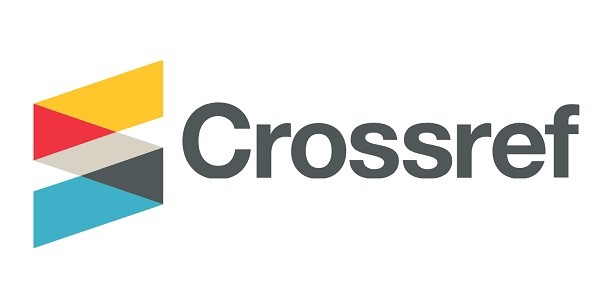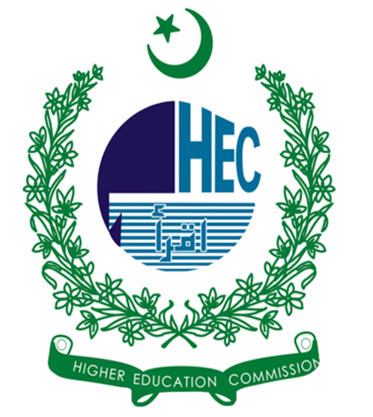Examining the Factors Affecting Exports Performance: Empirical Evidence from Finland
DOI:
https://doi.org/10.31384/jisrmsse/2022.20.2.5Keywords:
Exports, Finland, Industrial Growth, CorruptionAbstract
The present research is an effort to diagnose the exigent determinants of exports in Finland by using time series data from 1993-2020. The study employs a vector-error correction model (VECM) by using Johansen technique for co-integration. The empirical findings of the co-integration indicate the existence of a significant relationship between exports and its various determinants in the long run. The results of VECM revealed that exchange rate and remittances are significant and positive determinants of Finland’s exports in the long run. In the meanwhile, the impact of the exchange rate and remittances is significant but negative on the exports of Finland in the short run. On the other hand, industrial growth and corruption are incorporated in the model as exogenous factors in the short-run dynamics. The impact of industrial growth is positive and significant on the export's performance while corruption is negatively affecting the exports of the Finnish economy. The study suggests a conducive and stable exchange rate policy and control of corruption to encourage exports.
Downloads
References
Abeysinghe, T., & Yeok, T. L. (1998). Exchange rate appreciation and export competitiveness. The case of Singapore. Applied economics, 30(1), 51–55. DOI: https://doi.org/10.1080/000368498326137
Agosin, M. R. (2007). Export diversification and growth in emerging economies. 233, 559–562. Working paper.
Agosin, M. R., Alvarez, R., & Bravo-Ortega, C. (2012). Determinants of export diversification around the world: 1962-2000. The World Economy, 35(3), 295–315. DOI: https://doi.org/10.1111/j.1467-9701.2011.01395.x
Anagaw, B. K., & Demissie, W. M. (2012). Determinants of export performance in Ethiopia: VAR model analysis. Journal of Research in Commerce & Management, 2(5), 94–109.
Asim, H., & Akbar, M. (2019). Sectoral growth linkages of agricultural sector: Implications for food security in Pakistan. Agricultural Economics, 65(6), 278–288. Retrieved from https://core.ac.uk/download/pdf/43540817.pdf DOI: https://doi.org/10.17221/314/2017-AGRICECON
Azizi, S. (2021). Impacts of Remittances on Exchange Rates And Net Export. Global Economy Journal, 21(02), 2150006. DOI: https://doi.org/10.1142/S2194565921500068
Biggs, T. (2007). Assessing export supply constraints: methodology, data, measurement.
Bostan, I., Toderas, cu, C., & Firtescu, B. N. (2018). Exchange rate effects on international commercial trade competitiveness. Journal of Risk and Financial Management, 11(2), 19–19. DOI: https://doi.org/10.3390/jrfm11020019
David, B. (2013). Competitiveness and determinants of cocoa exports from Ghana. International Journal of Agricultural Policy and Research, 1(9), 236–254.
De Rosa, D., Gooroochurn, N., & Görg, H. (2010). Corruption and productivity firm-level evidence from the BEEPS survey (No. 5348). Policy Research Working Paper. DOI: https://doi.org/10.1596/1813-9450-5348
Dridi, M. (2013). Corruption and economic growth: the transmission channels. Journal of Business Studies Quarterly, 4(4), 121–152. Retrieved from https://mpra.ub.uni-muenchen.de/47873/
Ehrlich, I. (1996). Crime, punishment, and the market for offenses. Journal of economic perspectives, 10(1), 43–67. DOI: https://doi.org/10.1257/jep.10.1.43
Epaphra, M. (2016). Determinants of export performance in Tanzania. Journal of Economics Library, 3(3), 470–487.
Fang, W., & Miller, S. (2004). Exchange Rate Depreciation and Exports: The Case of Singapore. Economics Working Paper.
Fisman, R., & Svensson, J. (2007). Are corruption and taxation really harmful to growth? Firm level evidence. Journal of development economics, 83(1), 63–75. DOI: https://doi.org/10.1016/j.jdeveco.2005.09.009
Haaparanta, P., Tamminen, S., Heikkinen, P. M. S., Aunesluoma, J., Hakkala, K. N., Kiviluoto, J., & Rissanen, A. (2017). 100 vuotta pientä avotaloutta: Suomen ulkomaankaupan kehitys, merkitys ja näkymät.
Headey, D. D. (2013). Developmental drivers of nutritional change: a cross-country analysis. World Development, 42, 76–88. DOI: https://doi.org/10.1016/j.worlddev.2012.07.002
Hien, N. P. (2017). The impact of remittance on trade balance: The case of Malaysia. Journal of Economics and Public Finance, 3(4), 531–540. DOI: https://doi.org/10.22158/jepf.v3n4p531
Johansen, S. (1988). Statistical analysis of co-integration vectors. Journal of Economic Dynamics and Control, 12, 231–254. DOI: https://doi.org/10.1016/0165-1889(88)90041-3
Keho, Y. (2015). Foreign Direct Investment, Exports and Economic Growth: Some African Evidence. Journal of Applied Economics & Business Research, 5(4).
Konya, L. (2006). Exports and Growth: Granger Causality Analysis on OECD Countries with a Panel Data Approach. Economic Modelling, 23, 978–992. DOI: https://doi.org/10.1016/j.econmod.2006.04.008
Kozo, K., & Tetsuji, O. (2013). Effects of Industrial Policy on Productivity: The case of import quota removal during postwar Japan. The Research Institute of Economy. Trade and Industry, 1–35.
Layson, S. (1983). Homicide and deterrence: Another view of the Canadian time-series evidence. Canadian Journal of Economics, 52–73. https://doi.org/10.2307/134975 DOI: https://doi.org/10.2307/134975
Lilja, K., Räsänen, K., & Tainio, R. (1992). A dominant business recipe: the forest sector in Finland. European business systems: Firms and market in their national contexts, 137–154.
Lupu, D., Petrisor, M. B., Bercu, A., & Tofan, M. (2018). The impact of public expenditures on economic growth: A case study of Central and Eastern European countries. Emerging markets finance and trade, 54(3), 552–570. DOI: https://doi.org/10.1080/1540496X.2017.1419127
Mäki-Fränti, P. (2017). Finland struggling to defend its market share on rapidly expanding markets. Retrieved from http://urn.fi/URN:NBN:fi:bof-201706301393
Mohamad, S., Nair, M., & Jusoff, K. (2009). Exchange rates and export competitiveness in selected ASEAN economies. International Business Research, 2(2), 156–166. DOI: https://doi.org/10.5539/ibr.v2n2p156
Muhammad, Z. (2014). Macroeconomic Relationships between Exchange Rate Instability, Exchange Volatility, Trade and Economic Growth Variables: The case of Pakistan. Journal of Economics and Sustainable Development, 5(13).
Oinonen, S., & Virén, M. E. E. (2022). Why is Finland lagging behind in export growth? BoF Economics Review(5). Retrieved from https://nbn-resolving.de/urn:nbn:fi:bof-202206221303
Oliveira, H. C. D., Jegu, E., & Santos, V. E. (2020). Dynamics and determinants of export diversification in Brazil from 2003 to 2013. Economia e Sociedade, 29, 29–51. Retrieved from https://www.wto.org/statisticshttps://www.wto.org/english/res_e/statis_e/its2015_e/its2015_e.pdf DOI: https://doi.org/10.1590/1982-3533.2020v29n1art02
Olken, B. A., & Pande, R. (2012). Corruption in developing countries. Annu. Rev. Econ, 4(1), 479–509. DOI: https://doi.org/10.1146/annurev-economics-080511-110917
Olney, W. W. (2016). Impact of corruption on firm-level export decisions. Economic Inquiry, 54(2), 1105–1127. DOI: https://doi.org/10.1111/ecin.12257
Oo, T., Kueh, J., & Hla, D. T. (2019). Determinants of Export Performance in ASEAN Region: Panel Data Analysis. International Business Research, 12(8), 1–14. DOI: https://doi.org/10.5539/ibr.v12n8p1
Oyejide, T. A. (2007). African Trade, Investment and Exchange Rate Regimes and Incentives for Exporting. AERC Research Project on Export Supply Response Capacity. Retrieved from https://www.africaportal.org/documents/5669/OyejideA_Africa.pdf
Pohjola, M. (2003). Olemmeko maailman parhaimmistoa? Kansallisen kilpailukykymme puntarointia. In Talouden tutkimus ja päätöksenteko. Kirjoituksia rakennemuutoksesta, kasvusta ja talouspolitiikasta (163-181) (pp. 163–181). TALOUSTIETO OY.
Ramana, F. (2022). Marshall-lerner condition pada perdagangan indonesia-tiongkok. Buletin Ilmiah Litbang Perdagangan, 16(1), 59–78.
Regmi, R. H. (2022). Remittances and trade balance: A new transfer problem. Remittances Review, 7(1), 3–19. DOI: https://doi.org/10.33182/rr.v7i1.2166
Rodrik, D. (2008). The real exchange rate and economic growth. Brookings papers on economic activity, 2008(2), 365–412. Retrieved from https://www.brookings.edu/wp-content/uploads/2008/09/2008b_bpea_rodrik.pdf DOI: https://doi.org/10.1353/eca.0.0020
Stenborg, M., Huovari, J., Kiema, I., & Maliranta, M. (2021). Productivity and competitiveness in Finland Which factors affect competitiveness? Why do we need it. valtiovarainministeriö, 978–952. Retrieved from http://urn.fi/URN:ISBN:978-952-367-485-1
Thuy, V. N. T., & Thuy, D. T. T. (2019). The impact of exchange rate volatility on exports in Vietnam: A bounds testing approach. Journal of Risk and Financial Management, 12(1), 6. DOI: https://doi.org/10.3390/jrfm12010006
Tomoiaga, E., & Silaghi, M. I. P. (2022). Testing the Marshall-Lerner condition for Romania. Theoretical & Applied Economics, 29(1). Retrieved from http://store.ectap.ro/articole/1578.pdf
UNCTAD. (2005). Determinants of Export Performance: Developing Countries in International Trade. Trade and Development Index, 49–79. Retrieved from https://unctad.org/system/files/official-document/ditctab20051ch2_en.pdf
Uysal, O., & Mohamoud, A. S. (2018). Determinants of Export Performance in East Africa Countries. Chinese Business Review, 17(4). DOI: https://doi.org/10.17265/1537-1506/2018.04.002
Vaaler, P. M. (2011). Immigrant remittances and the venture investment environment of developing countries. Journal of International Business Studies, 42(9), 1121–1149. Retrieved from https://www.jstor.org/stable/41309754 DOI: https://doi.org/10.1057/jibs.2011.36
Wei, S. J. (1997). Why is corruption so much more taxing than tax? Arbitrariness kills. National Bureau of Economic Research. Working Paper No. 6255. DOI: https://doi.org/10.3386/w6255
Zalk, N. (2014). Industrialisation and Industrial Policy. Portfolio Committee on Trade & Industry, 1–18. Retrieved from https://static.pmg.org.za/140925industrialisation.pdf
Published
How to Cite
Issue
Section
License
Copyright (c) 2022 Hafiz Asim, Adnan Ali Shahzad, Bilal Nafees, Muhammad Faraz Mubarak

This work is licensed under a Creative Commons Attribution 4.0 International License.
Copyright: The Authors














